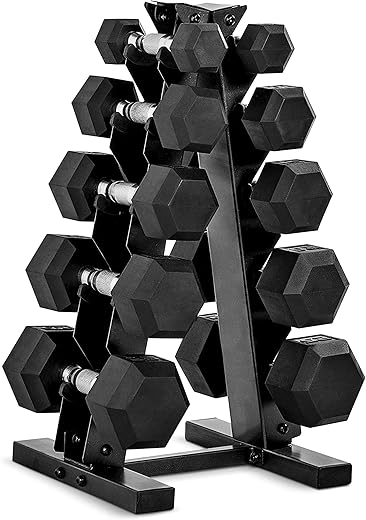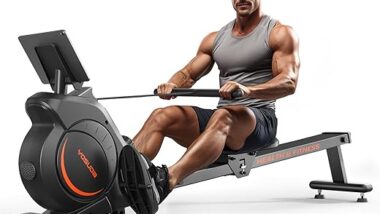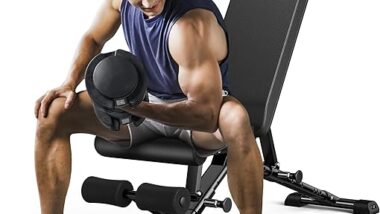Did you know that an estimated 80% of people who start a new workout routine give up within the first month? As someone who has faced the struggle of maintaining motivation in fitness, I understand how important it is to find the right equipment that not only fits your space but also keeps you engaged. With the rise of home gyms, many of us are looking for ways to stay active without the hassle of traditional gyms. Punching bags have become a popular choice, offering an effective way to relieve stress and build strength. In this post, I’ll dive into the pros and cons of wall-mounted versus freestanding punching bags, so you can choose the best fit for your home gym and your fitness journey. Let’s make sure you stay in that 20% who thrive!
Understanding Wall-Mounted Punching Bags
Wall-mounted punching bags are an excellent addition to any home gym setup, providing an efficient way to practice striking techniques without taking up valuable floor space. This section will explore the key characteristics and benefits of wall-mounted punching bags, including installation requirements, durability, and various striking surfaces. We’ll also address potential downsides, such as the importance of proper installation and limitations in mobility.
Characteristics of Wall-Mounted Punching Bags
Installation Requirements
One of the defining features of wall-mounted punching bags is their installation. Unlike traditional freestanding bags, these units require a solid wall for mounting. Here are some key points regarding installation:
- Tools Needed: Basic tools like a drill, level, and stud finder are essential for mounting.
- Wall Type: Ensure the wall is made of sturdy materials such as wood or concrete to handle the weight and impact of the bag.
- Mounting Hardware: Most wall-mounted bags come with necessary hardware, but it’s always advisable to check if additional support brackets are needed.
Space Requirements
Wall-mounted punching bags are ideal for those with limited space. They can be installed in smaller areas without compromising the workout experience. Here’s what you need to consider:
- Footprint: These bags only require wall space, making them suitable for garages, basements, or dedicated workout rooms.
- Height Considerations: Ensure that the bag is mounted at a height that allows for comfortable striking, typically around head height for most users.
Durability
Wall-mounted punching bags are designed for rigorous use and are typically made from high-quality materials. Here are some notable features:
- Material Quality: Look for bags made from durable synthetic leather or vinyl, which can withstand repetitive strikes.
- Reinforced Stitching: This feature enhances the bag’s longevity, preventing wear and tear from frequent use.
- Impact Resistance: High-density foam or padding within the bag absorbs shock, protecting your hands and wrists during workouts.
Advantages of Wall-Mounted Punching Bags
Stability During Workouts
One of the standout benefits of wall-mounted punching bags is their stability. Unlike freestanding models, which can wobble or topple during intense sessions, wall-mounted bags remain anchored and provide consistent feedback during strikes. This stability is crucial for developing power and technique.
Minimizing Floor Space Usage
Wall-mounted bags are perfect for maximizing your workout area. By utilizing vertical space, you can free up floor space for other activities or equipment. This makes them particularly advantageous in smaller apartments or home gyms.
Variety of Striking Surfaces
Wall-mounted punching bags come in a range of options to suit different training needs. Some popular choices include:
- Heavy Bags: Ideal for developing strength and power. For example, the Everlast 70-Pound Heavy Bag is a popular option that can easily be mounted to a wall.
- Speed Bags: Perfect for improving hand-eye coordination and speed. The Title Boxing Speed Bag offers a durable design suitable for wall mounting.
- Double-End Bags: Great for improving accuracy and timing. The Ringside Double End Bag can be mounted on a wall or ceiling, providing versatility.
Practical Examples of Wall-Mounted Punching Bags
- Everlast Wall-Mounted Heavy Bag: A durable option built to withstand heavy use while providing a stable striking surface.
- Century Original Wavemaster: Although primarily a freestanding bag, it can be converted to a wall-mounted system for those looking to save space.
- Ringside Wall-Mounted Bag: Known for its adjustable height feature, this bag allows users to customize their training setup according to their preferences.
Potential Downsides
Need for Proper Installation
While wall-mounted punching bags offer numerous benefits, proper installation is critical. Here are some considerations:
- Safety Risks: An improperly mounted bag can fall, posing a risk of injury. It’s essential to follow installation guidelines closely and consider hiring a professional if unsure.
- Wall Damage: Depending on the wall material, mounting a bag might cause damage or require additional repairs when removed.
Limitations in Mobility
Unlike freestanding bags, wall-mounted options are fixed in one location. This can be a downside for users who prefer to change their workout environment frequently. Here are a few points to consider:
- Fixed Location: Once installed, the bag remains in that spot, which may not be ideal for users who like to switch up their training area.
- Limited Versatility: Many wall-mounted bags do not offer the same range of motion or angles for strikes as freestanding models.
Summary of Key Points
| Key Point | Wall-Mounted Punching Bags |
|---|---|
| Space Usage | Minimal footprint; ideal for small areas |
| Stability | Remain anchored during intense workouts |
| Durability | Made from high-quality materials with reinforced stitching |
| Variety | Options for heavy bags, speed bags, and double-end bags |
| Installation | Requires proper installation; safety risks if poorly mounted |
| Mobility | Fixed location; limited versatility compared to freestanding bags |
In summary, wall-mounted punching bags are a practical solution for those looking to maximize their workout space while benefiting from a stable and durable striking surface. Understanding their characteristics, advantages, and potential downsides will help you make an informed decision when considering this equipment for your home gym.
Final Thoughts on Choosing the Right Bag for Your Space
In conclusion, choosing between wall-mounted and freestanding punching bags ultimately comes down to personal preferences and circumstances. I encourage you to assess your available space, budget, and specific training goals. If you have limited room and prioritize stability, a wall-mounted bag might be the best fit for you. On the other hand, if versatility and mobility are more important, a freestanding bag could be the way to go. Whichever option you choose, make sure it aligns with your workout style and enhances your training experience.






I think there’s a debate on whether wall-mounted bags are better than freestanding ones. What do you guys think? I feel like freestanding bags like the Everlast PowerCore offer more versatility.
Great point! It really depends on individual needs and space. Freestanding bags do have that added mobility, which is a plus for many users!
I’d love to see more details about how to install a wall-mounted bag. Any tips or tricks for those of us who are a bit DIY-challenged?
Absolutely! I can definitely expand on that. A good tip is to make sure you locate the wall studs for secure mounting. I’ll add a section about installation!
I started using a wall-mounted bag last year and it totally transformed my training routine. I can fit it in any corner of my apartment!
That’s awesome to hear! Wall-mounted bags can really maximize your training space. Keep up the great work!
I recently used a wall-mounted bag to train for a local boxing match, and it really helped improve my accuracy and speed. Highly recommend it for serious fighters!
So glad to hear it helped with your training! Wall-mounted bags are great for focusing on technique. Best of luck with your future matches!
Awesome read! Any recommendations for further reading on home gym setups? I’m looking to optimize my space.
Thanks for the feedback! You might find ‘The Ultimate Guide to Home Gym Equipment’ by Joe Wicks really helpful. It covers various setups and tips!
For anyone setting up a home gym, I recommend checking out the RDX Heavy Bag and a good pair of boxing gloves. It really makes a difference!
Thanks for sharing! The RDX Heavy Bag is a fantastic option for serious training. Good gloves are essential for protecting those hands!
Hey, great article! Personally, I find wall-mounted punching bags like the Century Wavemaster super handy for small spaces. Anyone else have experience with them?
Thanks for the kind words! The Century Wavemaster is indeed a solid choice for limited space. I’d love to hear more about your experience with it!